Cultivating Luck
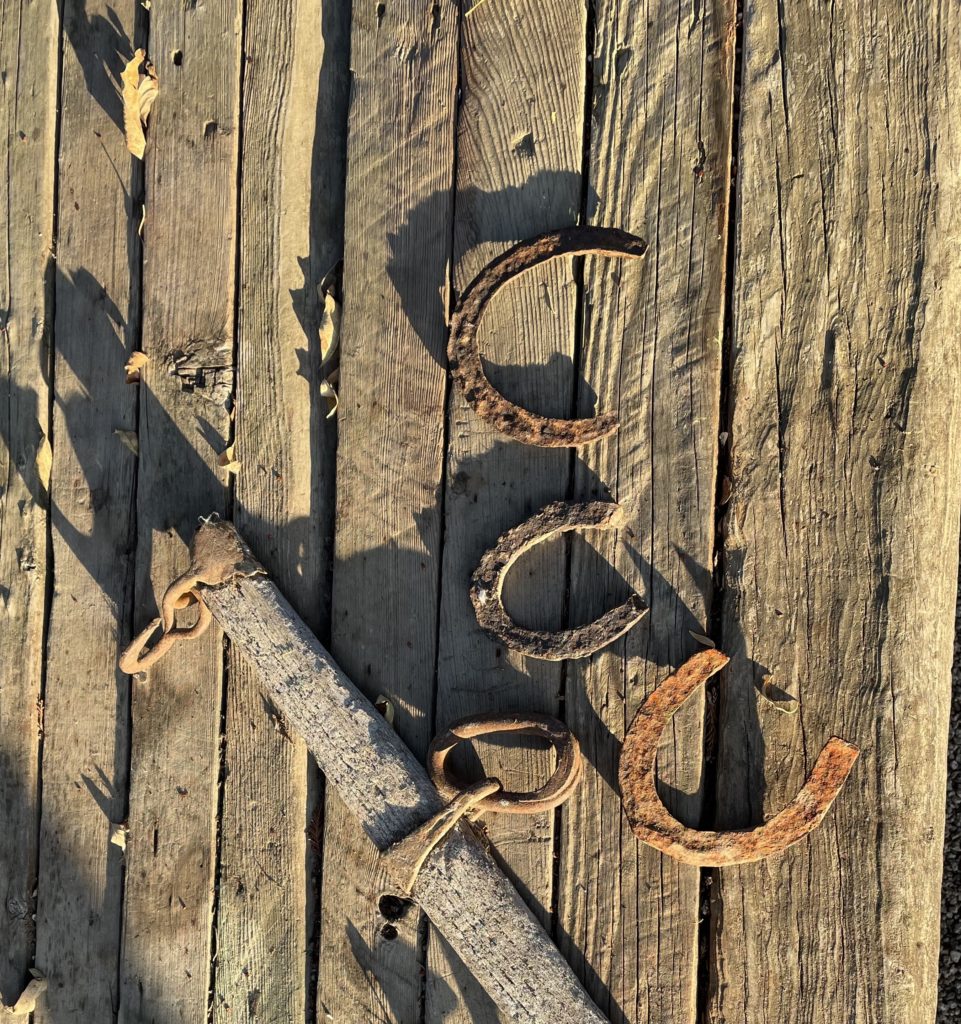
We’ve turned up three rusty, old horse shoes as we’ve gone about getting the “windmill field” ready to plant next spring, so does that make us lucky? I think so. Consider the facts:
My Great Grandfather Griffin farmed this field during the earliest years of the 20th century and the horse shoes were undoubtedly shed by his draft horses. My uncle told me once that the family had a contract at that time to grow cucumbers for Heinz pickles. They probably got a good crop because the soil is rich. They probably didn’t get a good price though, because my Great Grandfather ended up selling the field to Marius Jorgensen, a Danish immigrant who worked as a bricklayer in town. But, as luck would have it, during the sale my Great Grandfather’s son met Marius’s daughter, Anna, and the two youngsters got married, so the field stayed in our family even after the rest of the original Griffin ranch got sold off to pay debts, and eventually I was able to buy the land from my Uncle.
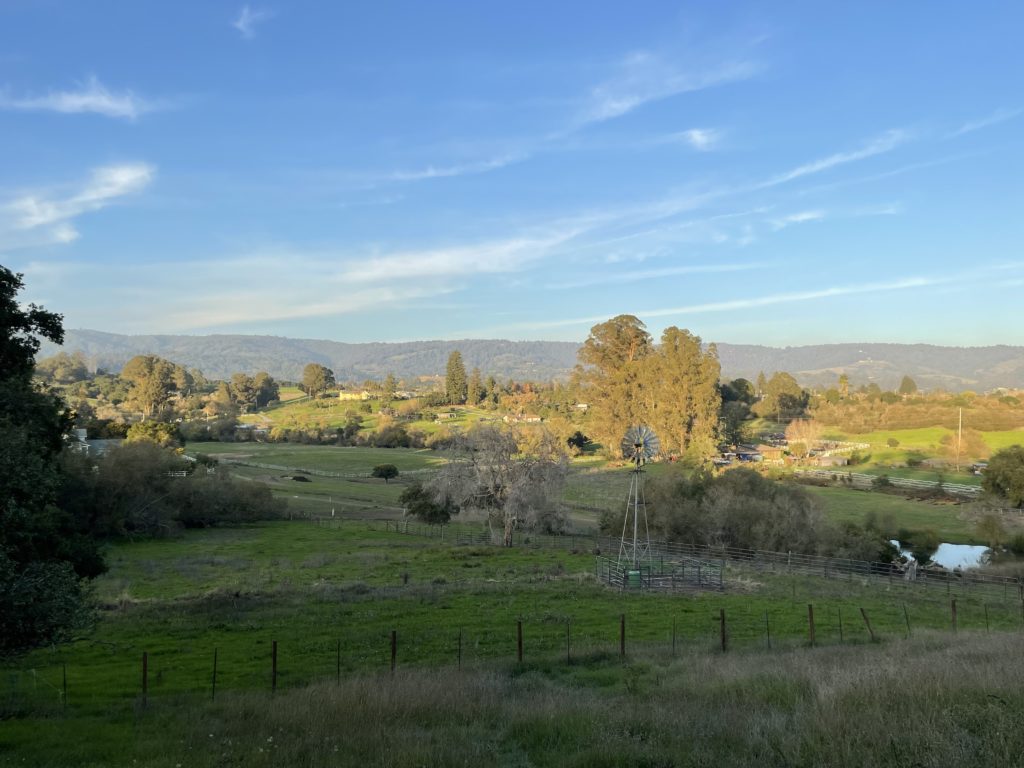
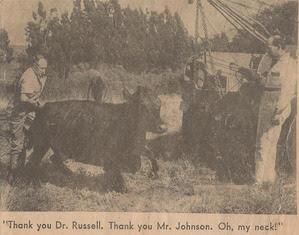
Clipping from the Register Pajaronian (circa 1955) showing Grandma Anna’s cow rescued from the well.
During the years that my Danish Great Grandpa had the land it was leased at one point to a flower grower who produced Calla lilies, and there are some feral lilies that still thrive in the edge of the field where a seep spring keeps the ground wet. There’s another spring under the windmill. My Great Grandpa Marius dug that spring out and he built a brick-lined spring box with a windmill above to lift the water to the surface where it filled a water trough for livestock that grazed the ground after the flower farm moved on. In the mid 1950s my Grandmother’s cow fell down into that well. A tow truck was able to haul the cow out, which was lucky, but Grandma ended up in the local news over that incident when a photographer for the Register-Pajaronian snapped a picture of her with the distraught cow hanging from the tow sling. Sudden fame made Grandma cross, because she’d never sought celebrity.
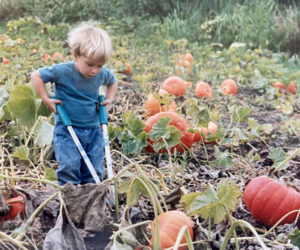
Graydon harvesting pumpkins 20 plus years ago.
I grew pumpkins and beans in this field in the late 1990’s and these crops did well. When I turned my attention to farming larger sections of leased ground, I put the field back into pasture for my donkeys. With a much smaller business these days, and much higher ag land rents to choke down, it makes sense to farm the field again. So, even as we wrap up all our work for the 2021 season, it’s already time to be planning and prepping ground for the 2022 season. The donkeys have been moved to the next field over and I put up a sturdy fence yesterday to make sure that they stay there. Like my Great Grandpa, I’ll plant some cucumbers, but I’m also planning on raising some beans. And not just any beans! These will be vining, “Jack and the beanstalk” style, “lucky” beans that can send runners climbing 20 feet high if they can find something to scale.
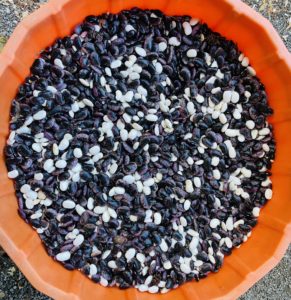
Akahana and Shirohana beans.
Our 2021 experimental bean crop at the land I farm along Freedom Blvd was a success. A successful experiment means that you learn something and, even a trial crop “fails,” the crop is still a success if you learn something. The beans I grew on rented ground were the purple Akahana mame and white Shirohana mame beans – Japanese selections of a runner bean that is native to the Oaxacan highlands. These are the same beans that I grew in this field when my son was a little boy. This year I found a ready market for the small crop of beans that I produced and I calculate that if I don’t spend so much money on rent next year then I can maybe even profit a bit if I grow a larger crop. Between the price of rent, poles, trellis wires, water and a lot of hand labor there are serious costs associated with growing runner beans, which is why you don’t see so many of them in markets. I’m lucky to have my own ground that I can plant into, and my own water to pump.
This past Saturday I was ready to winnow the beans I’d saved for our farm’s harvest box customers. It was warm and the bean pods were dried well but there was no breeze at all. So Starr plugged an extension cord in, strapped on her electric leaf blower, and took a turn as a new age Aeolus, whipping up a stiff wind to carry away the chaff from the stream of beans that fell as I poured them from one barrel into another. We will select some of these beans to plant next spring, and the rest we will put in this 2021 season’s last harvest box.
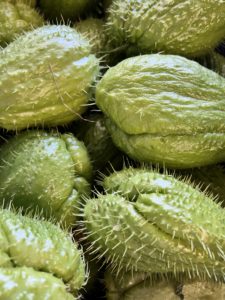 Another successful experiment this year was our Chayote crop, so I’ll be building a frame for a larger planting that will cross the windmill field. When our experimental chayote crop came in with a larger yield than expected Fidel, our foreman, sold the extra chayotes to the crowd of Oaxacan women who gather at the laundromat his wife frequents. The Oaxacan women were very clear; they were excited to get such fresh produce and they asked us to grow Chilacayotes too. Chilacayotes are sprawling plants, so we will put them below the chayote frame towards the end of the field where they can occupy as much space as they want. The thick canopy of leaves that the chilacayotes produce will act to discourage weeds.
Another successful experiment this year was our Chayote crop, so I’ll be building a frame for a larger planting that will cross the windmill field. When our experimental chayote crop came in with a larger yield than expected Fidel, our foreman, sold the extra chayotes to the crowd of Oaxacan women who gather at the laundromat his wife frequents. The Oaxacan women were very clear; they were excited to get such fresh produce and they asked us to grow Chilacayotes too. Chilacayotes are sprawling plants, so we will put them below the chayote frame towards the end of the field where they can occupy as much space as they want. The thick canopy of leaves that the chilacayotes produce will act to discourage weeds.
Along the soggy margins of the field where crops won’t grow we’re going to plant redwood trees. Starr and I have a program of planting some redwood trees every year as a gesture to the future. We’ve planted 15 of them so far. We usually buy a live redwood for a Christmas tree and then plant it out when the holidays are over, but every time we see a reasonably priced tree in a nursery we buy it. Long before my great grandfathers were here this land was a dense redwood forest, and it feels good to be replanting some trees. Since we’re planting the trees on the north side of the field they will never shade the field, but they will offer the field some wind protection. Besides, the earth needs help with CO2 and redwoods are great carbon sinks. We are lucky people to be living here and farming this ground, so planting redwood trees every year seems like an appropriate Christmas gift back to this land that has given us so much.
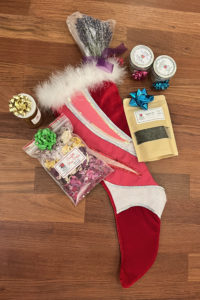 And speaking of gifts, if you are looking for a stocking stuffer…
And speaking of gifts, if you are looking for a stocking stuffer…


